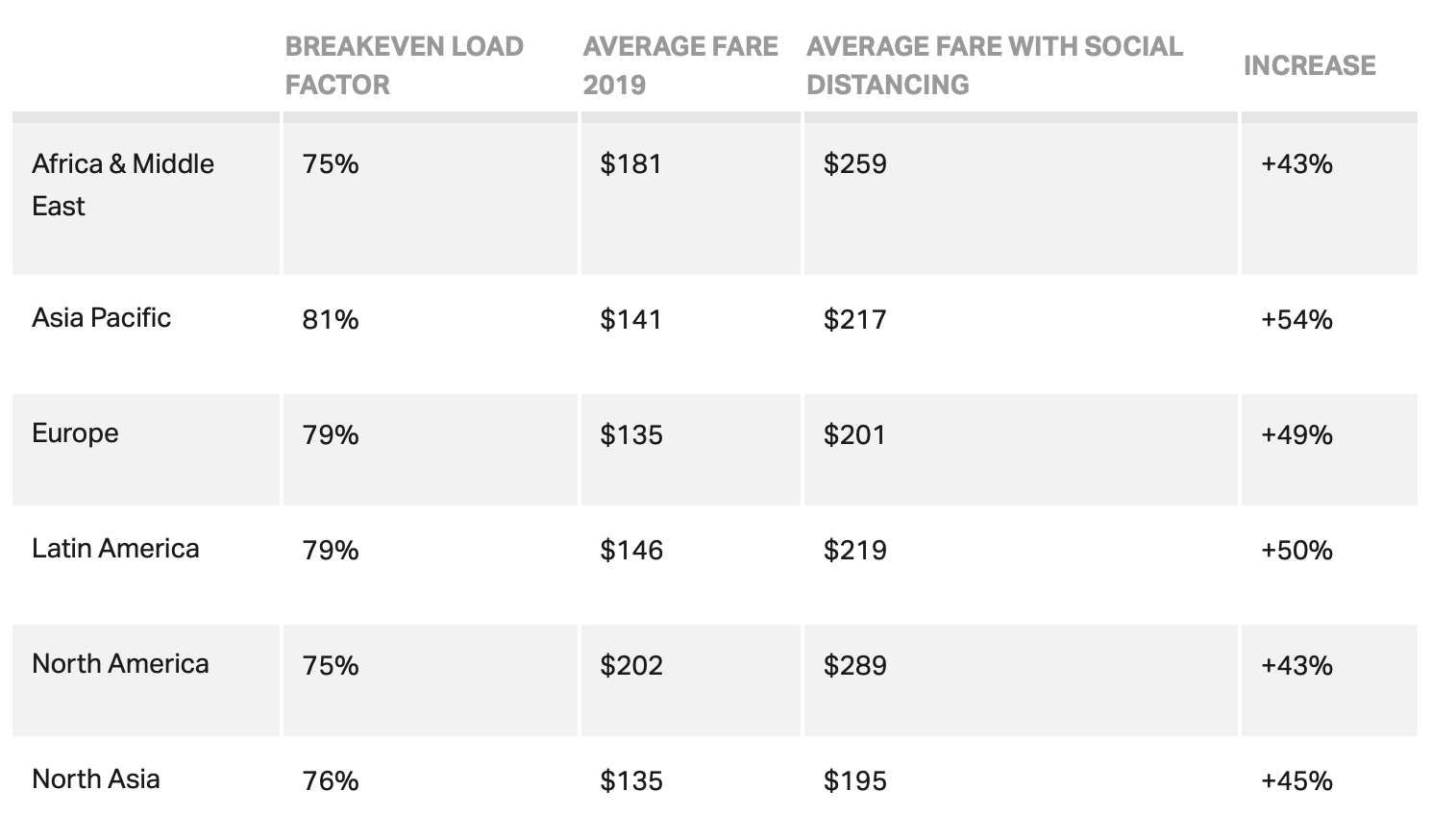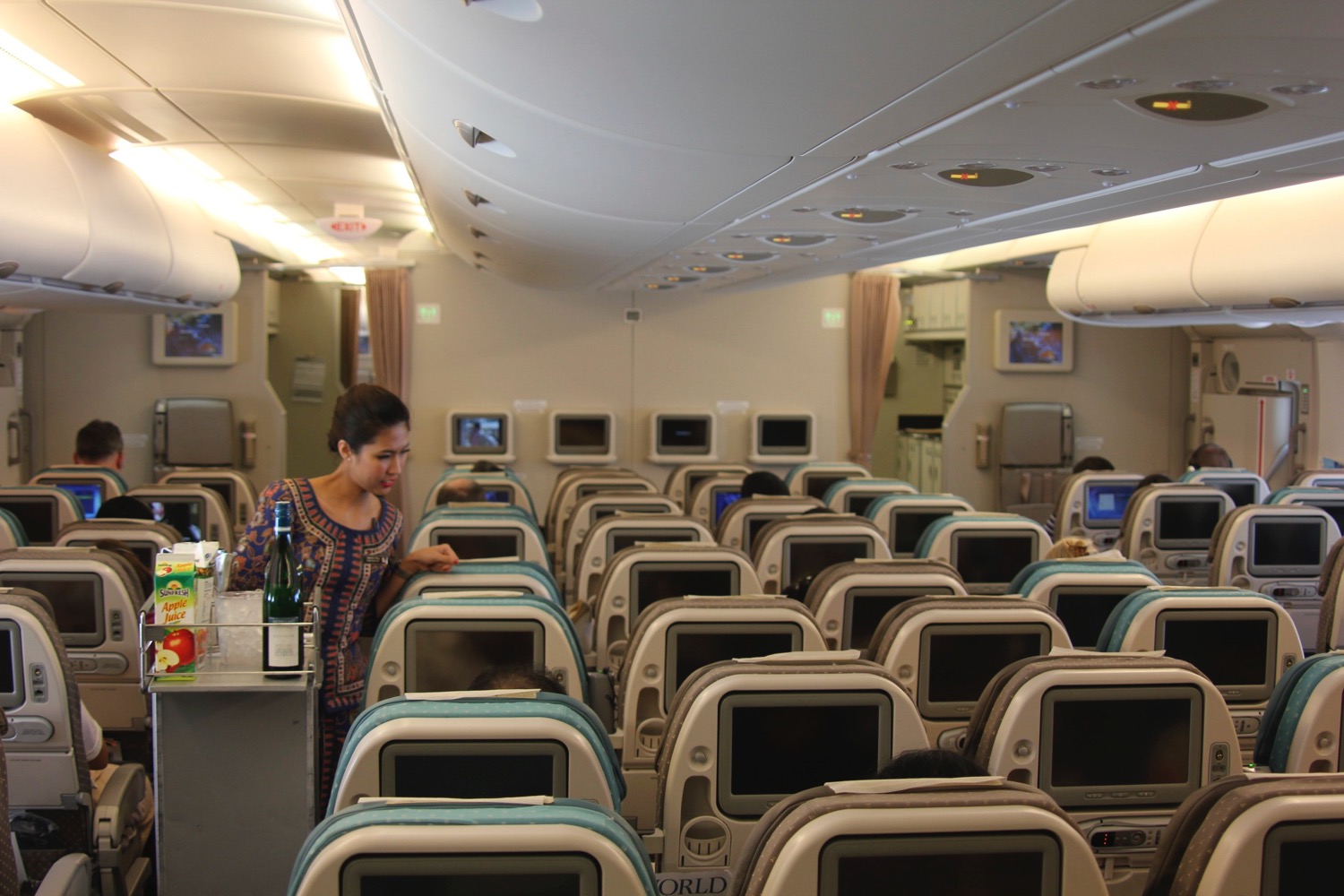The International Air Transport Association (IATA) warns that face masks are critical, but requiring airlines to block middle seats would be disastrous. Would you pay 50% more for that sense of security?
Alexandre de Juniac, IATA’s Director General and CEO, framed the argument in terms of necessity:
“The safety of passengers and crew is paramount. The aviation industry is working with governments to re-start flying when this can be done safely. Evidence suggests that the risk of transmission on board aircraft is low. And we will take measures—such as the wearing of face coverings by passengers and masks by crew—to add extra layers of protection. We must arrive at a solution that gives passengers the confidence to fly and keeps the cost of flying affordable. One without the other will have no lasting benefit.”
Additional arguments against social distancing on airplanes are made, including:
- There is little to no evidence of transmission spread onboard (based upon contact tracing results)
- Seats providing a barrier to transmission
- Onboard airflow minimizes risk
- Keeping middle seats open will not recommended separation for “safe” social distancing
But that’s not the main concern. The main concern is the economics of enforcing blocked middle seats. IATA argues that airfare would rise 43% – 54% (depending upon region) over 2019 levels simply to break even.

Therefore, de Juniac argues that open middle seats will depress travel demand and lead to more airlines going out of business:
“Airlines are fighting for their survival. Eliminating the middle seat will raise costs. If that can be offset that with higher fares, the era of affordable travel will come to an end. On the other hand, if airlines can’t recoup the costs in higher fares, airlines will go bust. Neither is a good option when the world will need strong connectivity to help kick-start the recovery from COVID-19’s economic devastation.”
What Is Really Necessary To Solve The Problem?
IATA proposes three solutions, any of which would mitigate the need for blocking middle seats.
- vaccine
- immunity passport
- effective, rapid, widespread COVID-19 testing
As I’ve discussed before, though, a so-called immunity passport might create more problems than it solves.
> Read More: Delta Air Lines Ready To Make Flying Conditional On Immunity Passports
CONCLUSION
I’m not in favor of social distancing onboard airplanes because it just doesn’t make sense from a practical or scientific standpoint. But perhaps framing the issue in terms of rising airfare prices is a better way to address whether consumers really have a tolerance for a new era of onboard social distancing…
> Read More: Want More Space On An Airplane? Fly Private Or Stay Home…


@Matthew: Not related to this post but not sure where to send you but wanted to get your thoughts on this article since it is in your hometown.
https://www.foxnews.com/us/la-city-council-votes-to-name-hotels-that-refuse-to-house-homeless-may-commandeer-them
I have an article going up about it soon, though it does not share my personal thoughts…maybe I’ll share those at a later time.
Very good question but my answer is probably no. Nowadays my plan is to simply book a flight a few days before rather than planning in advance. I’d much rather be on a flight with a light load so I’d have an open middle seat next to me without paying anything extra.
Yes. Hell yes. Absolutely yes.
I faced this the last time I flew United. My transcon coach seat was $250, so $500 for two, if two adjoining seats had been available. They weren’t. $800 for a seat in F. So, ask me, would I like to pay $375 instead of $500 or $800?
However, how long will it be until loads exceed 67%? It’s a moot question today.
When I start traveling by air again, I am willing to buy 6 seats if the airline lets me. If they don’t, I won’t fly initially. I would like to buy 9 seats but that’s too expensive for me. If a like minded passenger also buys 6 seats, then it would be like 9 seats for each of the 2 passengers. Airlines should take advantage of this to sell 6 seats for one passenger and guarantee an empty row (half row) in front and behind you.
I am confused. The head of IATA says “Evidence suggests that the risk of transmission on board aircraft is low”, yet I see on BBC news a piece that if a plane passenger in a middle seat is contagious, then the chances of the row ahead, behind and passengers either side catching the virus is 70 to 100%. Both cannot be right, I would tend to trust the BBC news given they are supposed to be impartial and reporting verified facts.
You need to be sitting close to the infected passenger to have a high risk of infection. Being one of eight people sitting next to the infected passenger is not a high probability, and even then infection is not certain. The virus, while certainly more contagious than the flu, is much less deadly for the general population that the scaremongering of the media would lead you to believe. Do you notice that they rarely, if ever, mention the age distribution and comorbidities of COVID-19 deaths on the news?
https://www.who.int/ith/mode_of_travel/tcd_aircraft/en/
“Eliminating the middle seat will raise costs. If that can be offset that with higher fares, the era of affordable travel will come to an end.”
Why has nobody asked this question: Would it really be such a bad thing if the era of affordable travel came to an end? I’m not so sure it would be.
Anyone who has experienced the crush of crowds in a popular tourist destination, or witnessed “over-tourism” might not think that would be a great tragedy.
I think it’s a question worth asking.
No, it would not help! Social distancing, how actually in a plane?? Wearing maskes for hours, lets say 12 hours straight?? Using the same bathrooms, would it be cleaned after each use?? How could I eat onboard without taking my mask off or risk contamination?? At the moment you would not get the premium service in C and F classes which we cheerish so dearly, instead cheap food boxes either water or juice in tetra packs…so is it all worth it to travel now??
For me a big NO, I would not travel in C or F class with far inferior services and definitely still a high risk of infection both during the flight and on the ground!